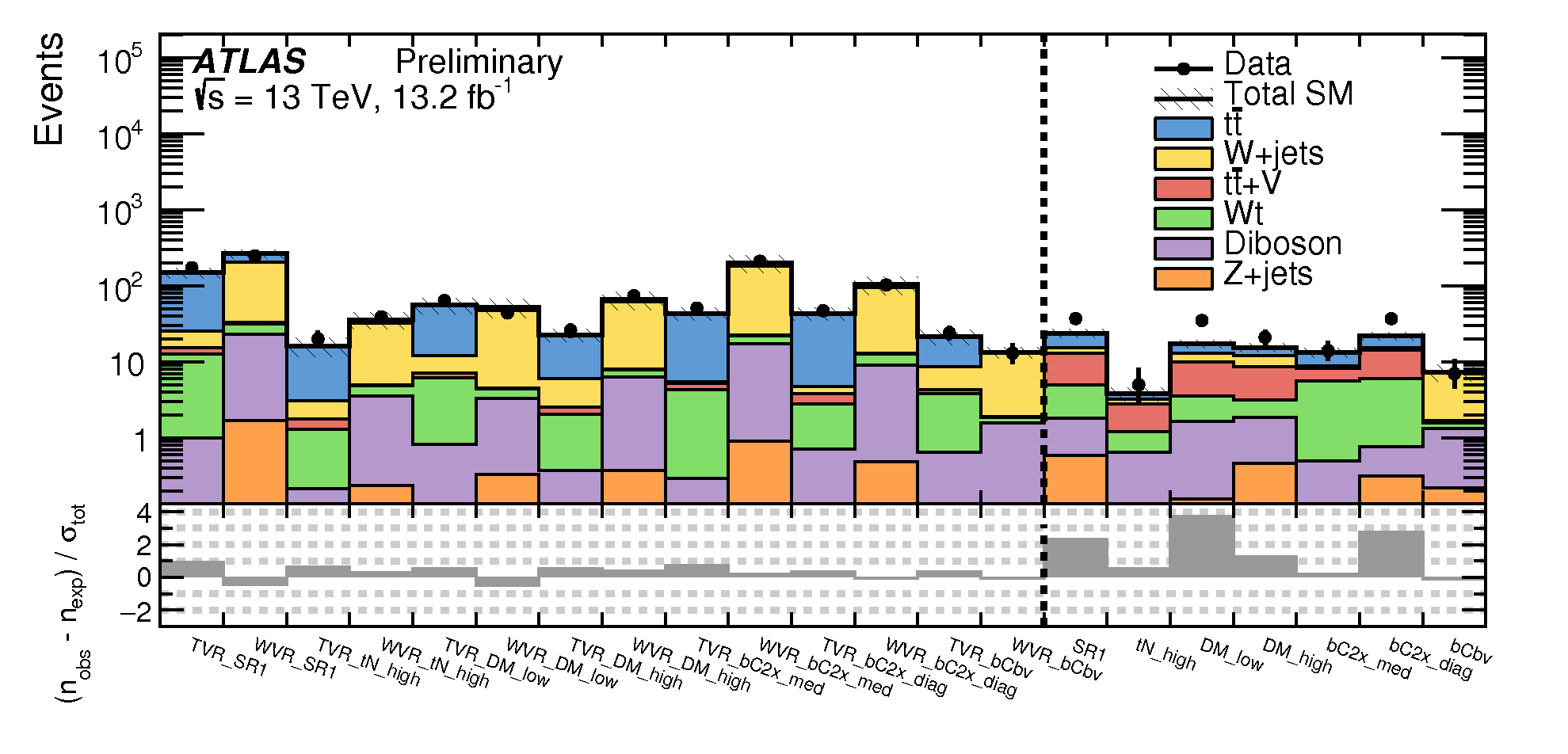Further progress in the quest for SUSY particles
4 August 2016 | By

According to Supersymmetry, or SUSY, there is a host of undiscovered new particles out there – at least one for every known particle. The lightest supersymmetric particle is thought to be the constituent of dark matter, which binds galaxies together. The SUSY partner of the heaviest known ordinary particle, the top quark, is thought to play a key role in determining the strength of the weak nuclear force which regulates (among other things) most radioactive decays and the fusion reactions that power the stars. Despite the strong theoretical arguments, however, no evidence of SUSY particles has yet been found.
The LHC performance has been exceeding expectations, delivering proton-proton collisions at a record rate. ATLAS physicists have been eagerly searching the collected data for evidence of the production of the supersymmetric top quark (squark). Theory predicts that the top squark would decay to ordinary quarks, a dark matter particle and possibly leptons (electrons or muons).
ATLAS physicists have been eagerly searching the collected data for evidence of the supersymmetric top quark ("squark").
Recent ATLAS results feature five separate searches for this elusive particle. Each search differs in the number of leptons in the final state, covering all the possible decay modes. Four searches require respectively zero, one, two, or three light leptons (electrons or muons) and the fifth targets decays to tau leptons.
Overall, the data gathered have been found to be consistent with the production of only known particles. This has resulted in the raising of the minimum mass for the top squark which is compatible with the observations. An intriguing small excess of collision events with the characteristics of a supersymmetric signal has been found in the selection with one lepton (see Figure 1). However the mild statistical significance of three standard deviations makes the excess compatible with a background fluctuation. With ATLAS physicists looking at many different selections in search for new phenomena, it is expected that some of them will have a somewhat larger rate than predicted. It’s like rolling two dice over and over – sometimes you’ll roll a double six. More data will be collected soon, allowing us to prove or reject the existence of a supersymmetric signal. Stay tuned!
Links:
- Searches for SUSY top squarks in events with no leptons (ATLAS-CONF-2016-077)
- Searches for SUSY top squarks in events with one lepton (ATLAS-CONF-2016-050)
- Searches for SUSY top squarks in events with two leptons (ATLAS-CONF-2016-076)
- Searches for SUSY top squarks in events with tau leptons (ATLAS-CONF-2016-048)
- Searches for SUSY top squarks with Z bosons (ATLAS-CONF-2016-038)
- Explore all ATLAS 13 TeV results for 2016 summer conferences.



